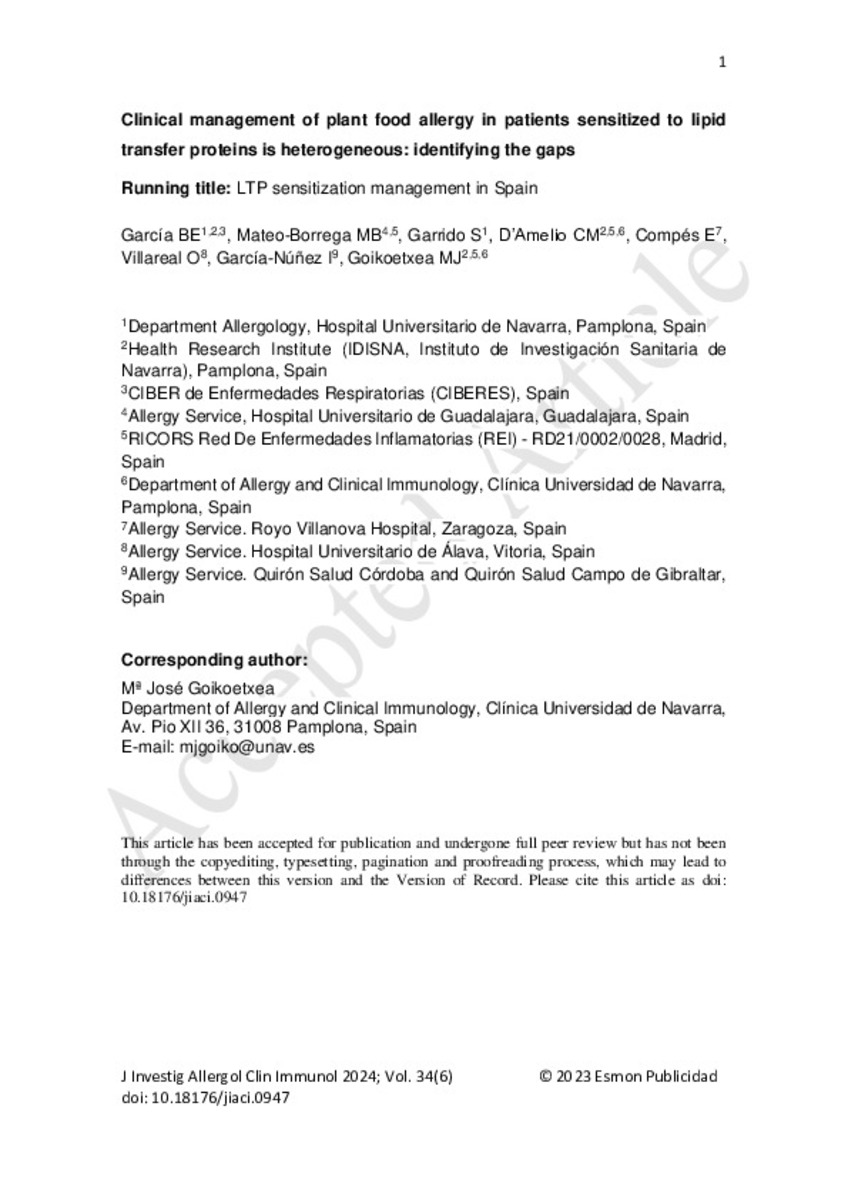Clinical management of plant food allergy in patients sensitized to lipid transfer proteins is heterogeneous: identifying the gaps
Other Titles:
LTP sensitization management in Spain
Keywords:
Materias Investigacion::Ciencias de la Salud::Alergia
Avoidance-diet
Diagnosis
Food allergy
Lipid transfer protein
Management
Peach allergy
Sublingual immunotherapy
Treatment
Publisher:
Esmon Publicidad
Citation:
Garcia, B.E. (Blanca E.); Mateo, M.D. (María D.); Mateo-Borrego, M.B. (María Belén); et al. "Clinical management of plant food allergy in patients sensitized to lipid transfer proteins is heterogeneous: identifying the gaps". Journal of Investigational Allergology and Clinical Immunology. 34 (6), 2024, 1 - 32
Statistics and impact
0 citas en

0 citas en

Items in Dadun are protected by copyright, with all rights reserved, unless otherwise indicated.







